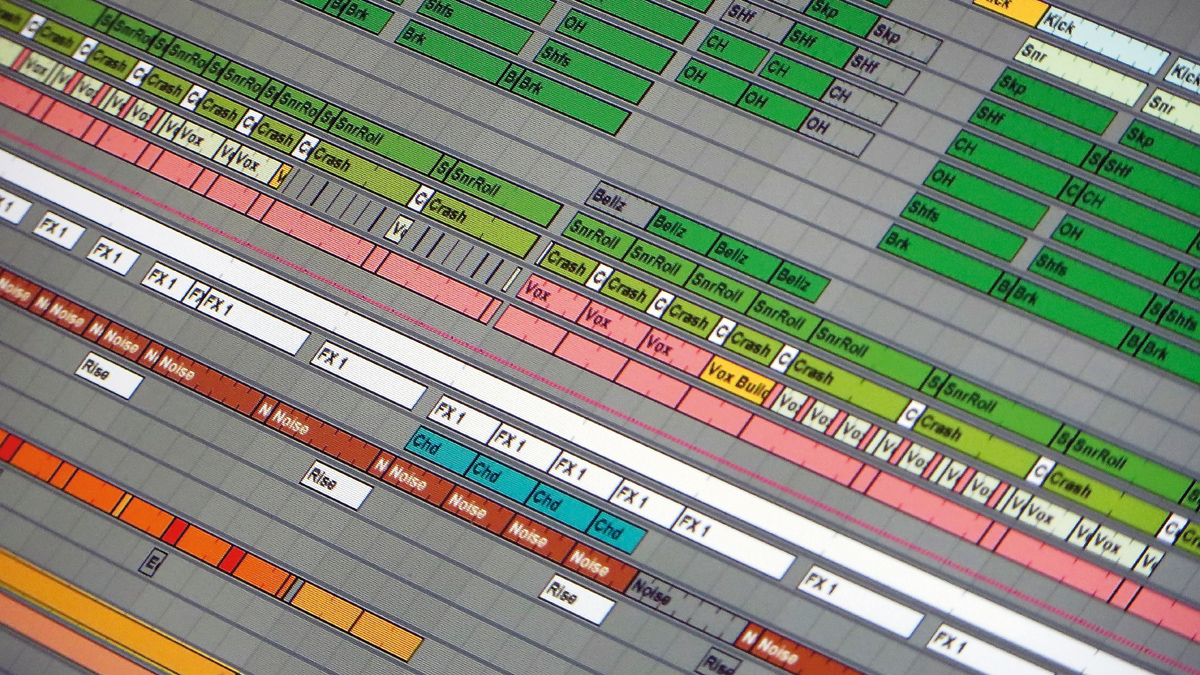9 creative strategies that’ll improve your track arrangements
How to become a better song builder

Everyone has their own way of arranging a track, but if you do things the same way all the time, there’s a danger that you’ll end up repeating yourself.
As such, it’s a good idea to consider different creative strategies when you’re at the song construction stage. Here are nine things you can try.
1. Let it go
If one or more of your track elements just doesn’t seem to work in the context of the bigger picture, then don’t be afraid to delete and move on.
2. Record your jams
Ever tinkered with arrangement ideas at the loop stage? It’s fun to keep your loop repeating over and over as you tweak faders, mute and unmute parts, and adjust things on the fly. Yet when it comes to actually laying that down on the timeline, your collection of blocks may have lost some of that mojo that your ‘live jam’ previously had.
If your DAW doesn’t give you the ability to capture your live performance on the timeline, record your system audio as you play around with a pseudo-arrangement at the loop stage. That way, you can go back and listen to the recording to hear exactly how you arranged everything.
If one or more of your track elements just doesn’t seem to work in the context of the bigger picture, then don’t be afraid to delete and move on.
3. Arrange with filters
The humble filter could possibly be the most useful and versatile tool for arranging great tracks. Imagine a full-frequency chord progression as an example: by muffling its high and mid frequencies in the early stages, you’ll merely hint at the melodic potential to come; then, by opening the filter frequency as the track progresses, you’ll slowly build tension and momentum until the hands-in-the-air chorus slams in!
Another great example can be found in house and techno: by high-pass-filtering the track’s kick, it’s easy to make mini breakdown and cool-down sections that still keep the groove plodding along.
Want all the hottest music and gear news, reviews, deals, features and more, direct to your inbox? Sign up here.
4. Look elsewhere
If you feel like copying the structure of another track, try using examples from genres other than the one you’re creating to inspire fresh twists on tried-and-tested formulas.
5. Do what they least expect
Electronic musicians coming from a compositional ‘loop- building’ mindset like to keep things cyclical and roll out elements in a consistent, ordered fashion. Some situations, however, require something a bit more extreme - which is where one-off events come in useful.
An example of this could be a grooving dance track that requires something special to separate the second drop or chorus from the first. In this case, chucking in a new vocal edit, drum fill or synth sound - one that hasn’t featured anywhere else in the song - will act as a metaphorical slap in the listener’s face, causing them to sit up and pay attention.
6. Don’t start at the beginning
Don’t get bogged down creating a minute-long intro designed for DJs until after you’ve made the core section of your track. This way, you’ll have lots of sonic material from later in the track to use for your intro.
7. Take it down a notch
It’s tempting to pile up more and more sounds in the search for change and interest. Counterintuitively, though, it’s often the quiet moments between the intense sections that give a song real power and flow - you can’t really have moments of high intensity without contrasting sections of low intensity.
So before you fill up an arrangement with more and more sounds, think about the most important sections you already have, and how to emphasise them with contrasting periods of sparsity. As an example, use your bridge section as ‘calm before the storm’, to signify that an epic chorus is on the horizon.
It’s often the quiet moments between the intense sections that give a song real power and flow
8. Classier chords
For an interesting touch of variation, switch up your chord arrangements by using a different synth for each note of the chord.
9. Automation is your friend
Automation is one of the most versatile arrangement tools in the modern DAW. With parameter movements, you can invoke all kinds of changes over time. Basic examples include sweeping an element’s volume into the mix, opening and closing filter cutoffs, introducing new percussion gradually, and simply turning down an element to make room for others.
Taking things further, you can increase perceived intensity over the course of a song by automating effects. Try drawing in sporadic send levels from vocal signal to a delay return, to sprinkle the mix with repeating echo effects at strategic points; or increase a sound’s saturation amount later in the track to step up intensity.
It can be fun to take a leaf out of the dub reggae producer’s book and assign channel faders to MIDI sliders. Just hit record and jam out a track in real time.
Future Music is the number one magazine for today's producers. Packed with technique and technology we'll help you make great new music. All-access artist interviews, in-depth gear reviews, essential production tutorials and much more. Every marvellous monthly edition features reliable reviews of the latest and greatest hardware and software technology and techniques, unparalleled advice, in-depth interviews, sensational free samples and so much more to improve the experience and outcome of your music-making.
